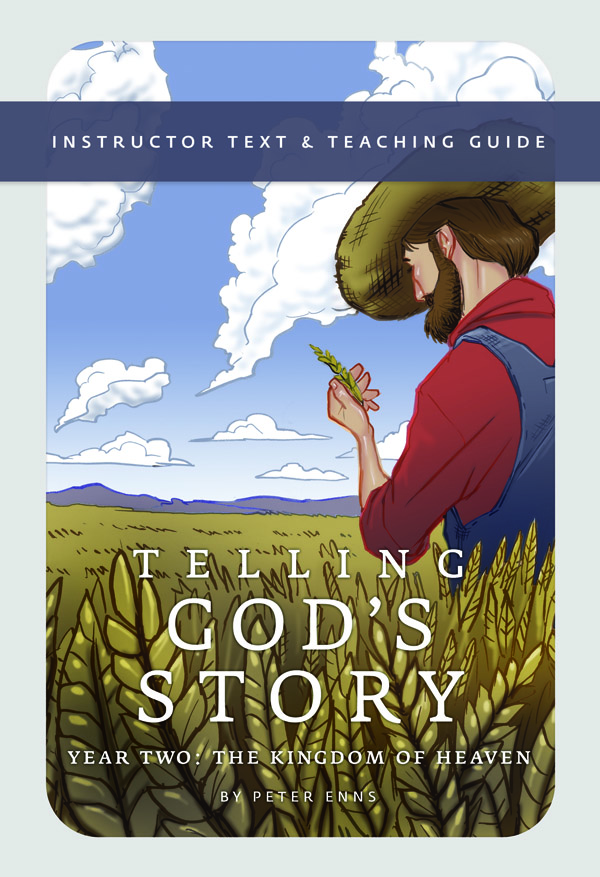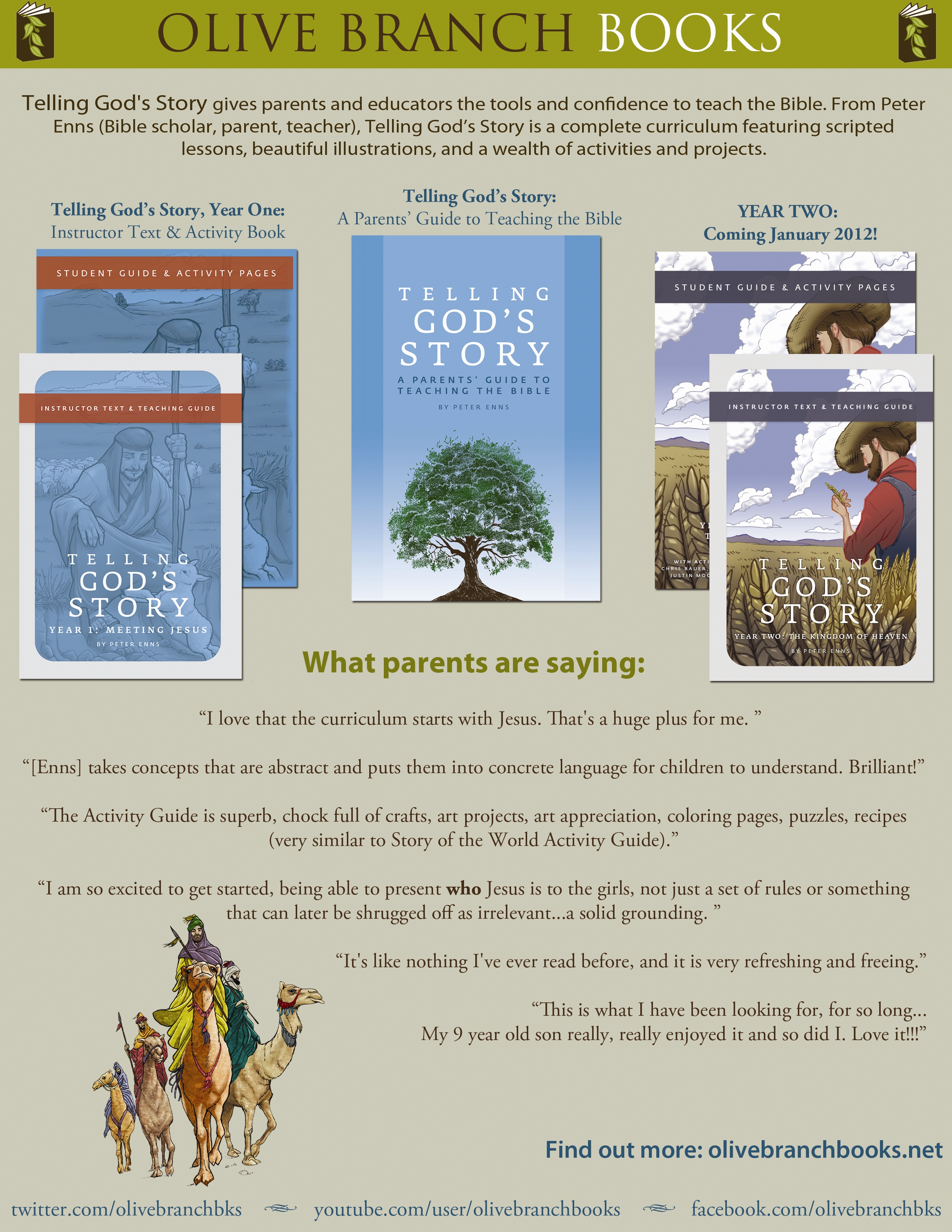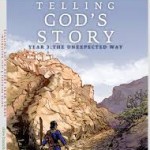 Grade 2 of my children’s Bible Curriculum Telling God’s Story is out, or nearly so, the proof of which I offer in the colorful photo above–a sort of first fruit of the harvest, guaranteeing what is to come (if I may paraphrase the Apostle Paul).
Grade 2 of my children’s Bible Curriculum Telling God’s Story is out, or nearly so, the proof of which I offer in the colorful photo above–a sort of first fruit of the harvest, guaranteeing what is to come (if I may paraphrase the Apostle Paul).
You can take a gander at the table of contents. Olive Branch Books also has a blog for the curriculum. The main website has some other information and FAQs.
So far, the reception of the curriculum has been very encouraging to me and Olive Branch Books. Below is a flyer that gives an overview of the volumes out so far, including some testimonials.
The curriculum is scheduled to cover grades 1-12, and the approach we are taking is unique.
We do not begin with Bible stories at the youngest ages. Adam and Eve, the Flood, Tower of Babel, the Exodus, and David and Goliath may seem child-friendly, with a lot of action and dripping with clear moral lessons.
But these are not children’s stories and they were not written to be moral guides. These are complex ancient narratives that bear nuanced theological lessons intended for adult readers and thinkers. That does not mean that children can’t benefit from them. It just means that these stories may not be the best place to start with six year-olds.
So, rather than beginning with “Bible Stories,” Telling God’s Story begins in grades 1-4 by grounding children in the faith by introducing them to Jesus as he is presented in the four Gospels. In grades 1 and 2, we have laid out the Gospels in eight units totaling thirty-six lessons (one a week for the school year), complete with an activity book that makes this professor want to break out the scissors and paste.
The eight units are intended to introduce children to Jesus in the way the Gospel writers do: Stories Jesus Told (parables), Miracles Jesus Did, Teachings of Jesus, Sermon on the Mount, Jesus’ Early Life, Jesus’ Disciples, Opposition to Jesus, and The End of Jesus’ life.
Each lesson includes a “parent lesson,” intended to explain the theology of the passage for that day to parents on an adult level, should they feel they need a jump start. The children’s lesson follows–an abbreviated and simplified version of the parent lesson.
The plan for grades 5-8 is to turn back to the Old Testament and walk the students through Israel’s “grand narrative” from creation through the return from exile.
We won’t go book by book, and we will work hard not to get lost in the details. The focus here will be on grasping the big picture of what the Old Testament is trying to get across so that young students can feel like they generally “get” the Old Testament, which will prepare them to study the books of the Old Testament as they continue their spiritual journeys.
The high school curriculum will look more closely at the Bible in light of its historical backgrounds. Too often young men and women go through high school and then into college without any true awareness that the Bible reflects the ancient cultures in which it was written–and the difference such awareness can make in reading the Bible. They are ill-prepared to work through the complexities of what it means to read the Bible as an adult, and are often deeply unsettled in their first college “Introduction to the Bible” class.
We want to help that not happen, and we feel the way to it is not by giving young adults simplistic arguments for why they know they’re right and their professors are all wrong. Rather, we want to talk to them about what the issues are, and give them tools for thinking through the issues to help them on their journeys of faith.
That’s a quick summary of the curriculum. If you want more details on what the curriculum is about, I have written a short parent guide book doing just that.












